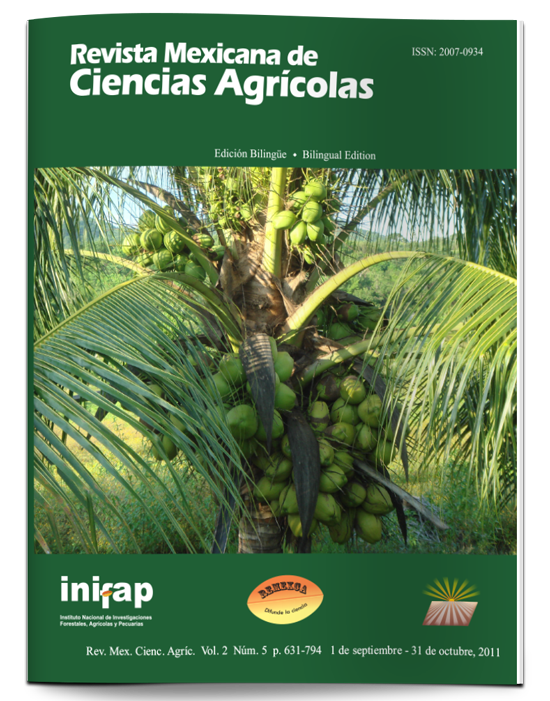CONTROL OF TWO SPECIES OF Colletotrichum CAUSING ANTHRACNOSE IN MARADOL PAPAYA FRUITS
DOI:
https://doi.org/10.29312/remexca.v2i5.1614Keywords:
Carica papaya, Colletotrichum dematium, Colletotrichum gloeosporioides, EPAAbstract
Anthracnose is a limitation of papaya fruits’ life, mainly caused by Colletotrichum gloeosporioides, although it is possible to find other Colletotrichum species causing diseases in the same crop. In order to control anthracnose in Yucatán, several fungicides are recommended, but not all of them are allowed by the Environmental Protection Agency (EPA) of the United States, the main country to which Yucatan’s papaya is exported. This study aimed to identify the causal agent of anthracnose of papaya in Yucatan, to evaluate the effect of fungicides that have EPA registration on species that cause anthracnose and to explore the effect of resistance inducers in controlling this disease. During March and May 2006, nine isolates of Colletotrichum were obtained from fruits of three producing regions of Yucatán, which were identified using taxonomic keys. The product evaluation was done by sensitivity in vitro bioassays and the effectiveness in inoculated fruits, ensuing in August 2007, November 2007 and February 2008, the effect of postharvest application of fungicides and resistance inducers on anthracnose on naturally infected fruits from the field were evaluated. In the three sites, two species that cause anthracnose were found and identified as C. gloeosporioides and C. dematium. Under in vitro conditions, C. gloeosporioides development was inhibited by prochloraz, ferbam, azoxystrobin, tryf loxystrobin and chlorothalonil; C. dematium development was inhibited only by prochloraz, ferbam and chlorothalonil. In inoculated fruits, prochloraz was 100% effective for both species, while azoxystrobin was 87.5% effective in C. gloeosporioides and 3.3% in C. dematium.
Downloads
Downloads
Published
How to Cite
Issue
Section
License
The authors who publish in Revista Mexicana de Ciencias Agrícolas accept the following conditions:
In accordance with copyright laws, Revista Mexicana de Ciencias Agrícolas recognizes and respects the authors’ moral right and ownership of property rights which will be transferred to the journal for dissemination in open access. Invariably, all the authors have to sign a letter of transfer of property rights and of originality of the article to Instituto Nacional de Investigaciones Forestales, Agrícolas y Pecuarias (INIFAP) [National Institute of Forestry, Agricultural and Livestock Research]. The author(s) must pay a fee for the reception of articles before proceeding to editorial review.
All the texts published by Revista Mexicana de Ciencias Agrícolas —with no exception— are distributed under a Creative Commons License Attribution-NonCommercial 4.0 International (CC BY-NC 4.0), which allows third parties to use the publication as long as the work’s authorship and its first publication in this journal are mentioned.
The author(s) can enter into independent and additional contractual agreements for the nonexclusive distribution of the version of the article published in Revista Mexicana de Ciencias Agrícolas (for example include it into an institutional repository or publish it in a book) as long as it is clearly and explicitly indicated that the work was published for the first time in Revista Mexicana de Ciencias Agrícolas.
For all the above, the authors shall send the Letter-transfer of Property Rights for the first publication duly filled in and signed by the author(s). This form must be sent as a PDF file to: revista_atm@yahoo.com.mx; cienciasagricola@inifap.gob.mx; remexca2017@gmail.
This work is licensed under a Creative Commons Attribution-Noncommercial 4.0 International license.



